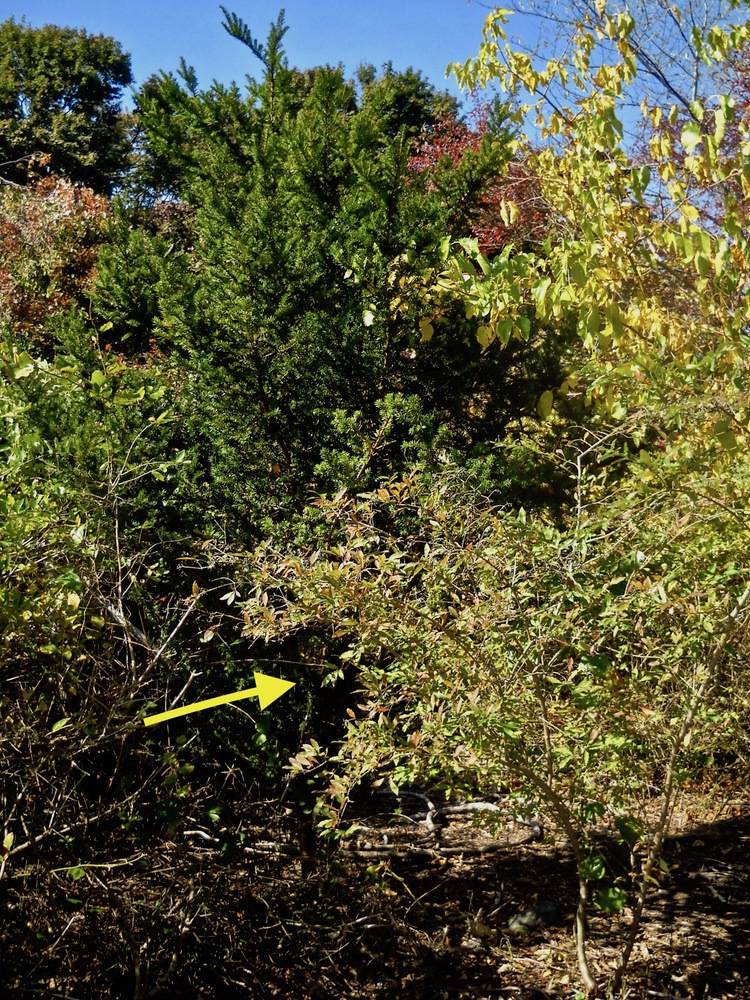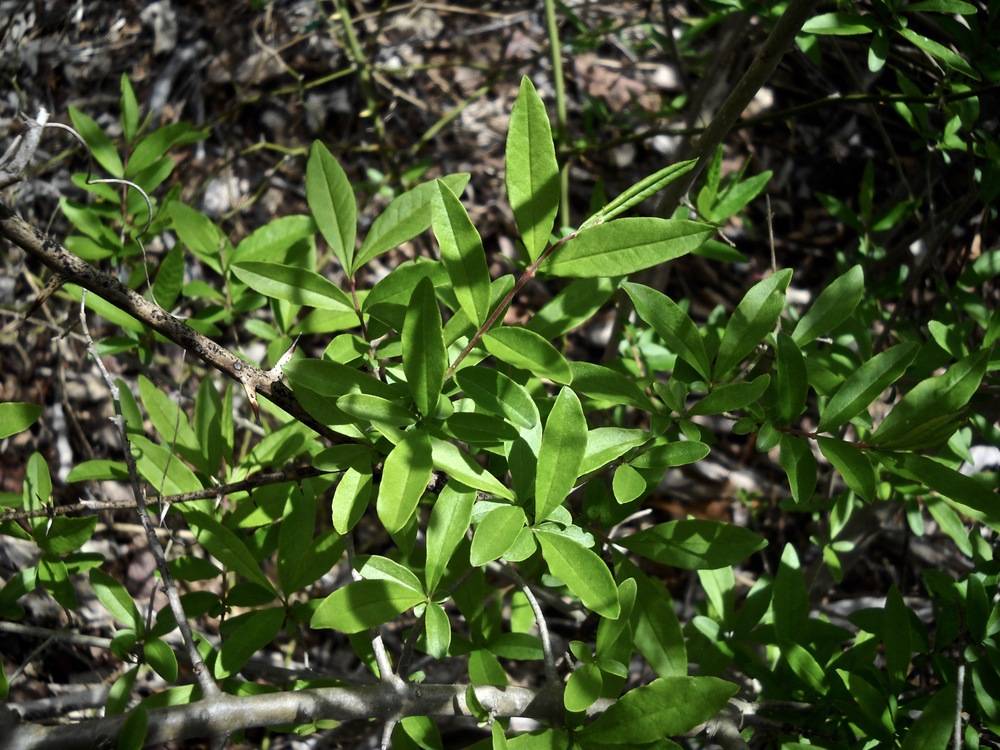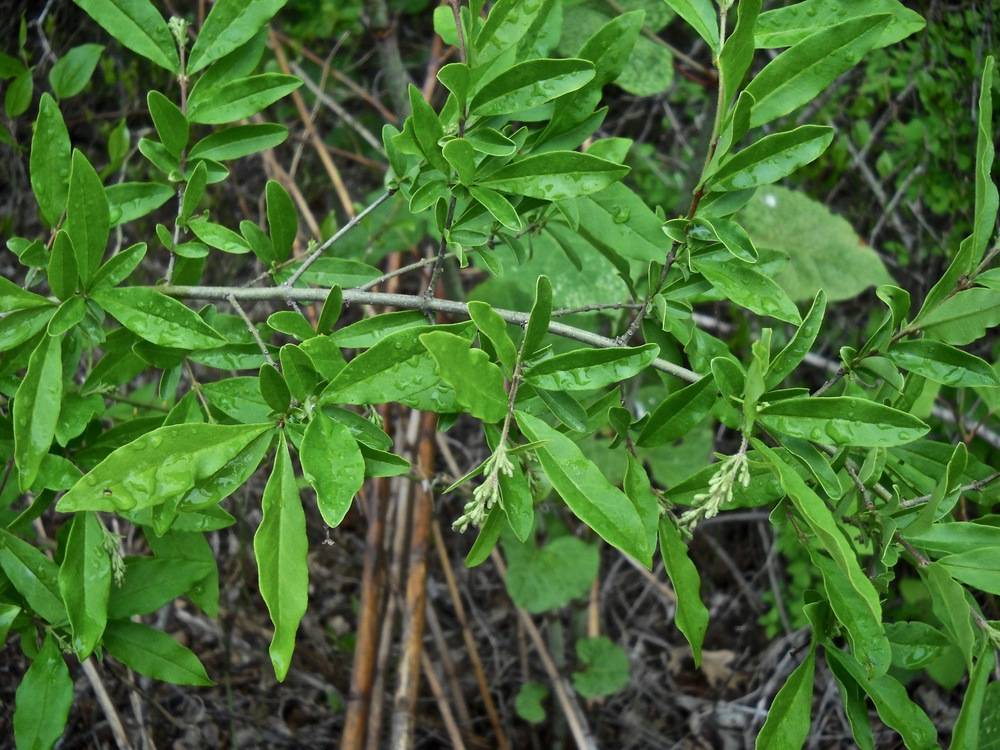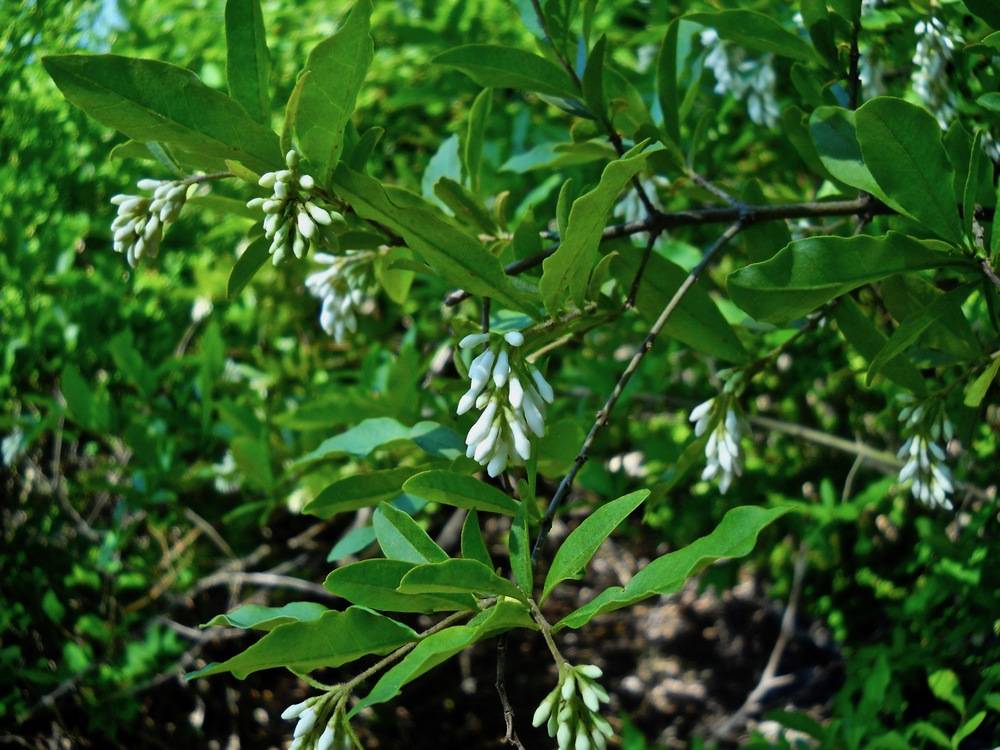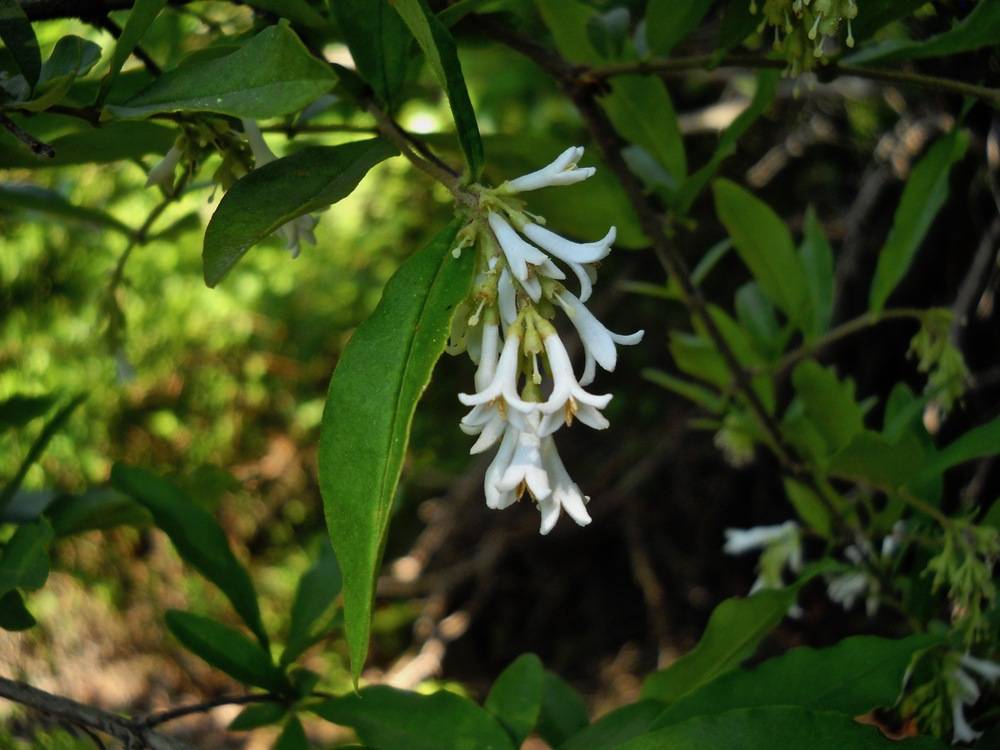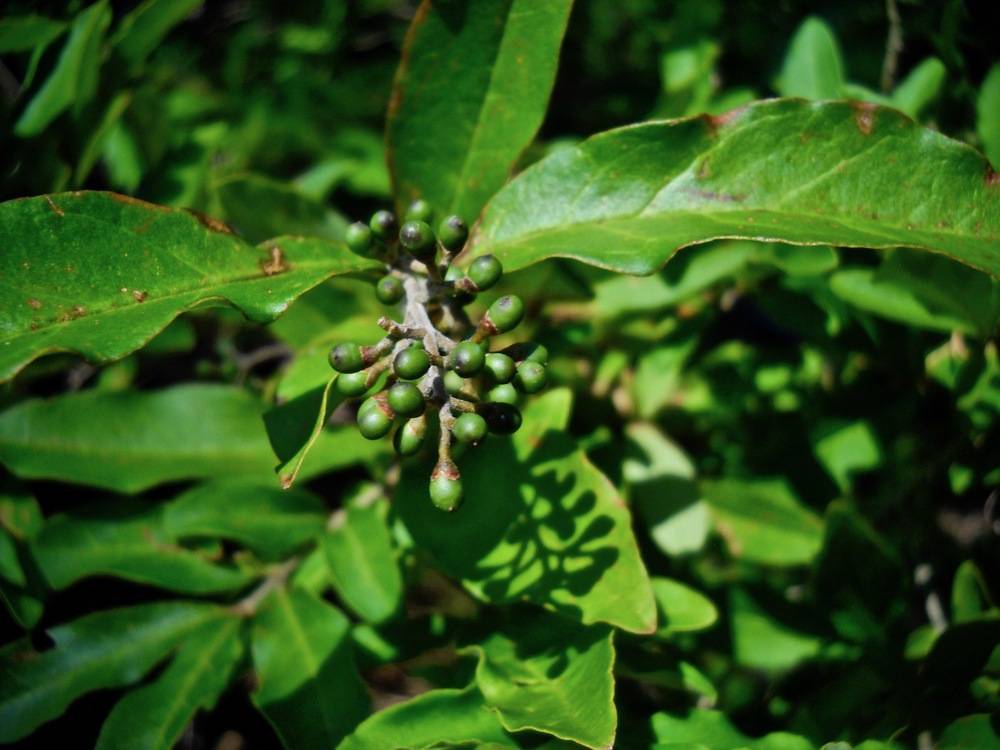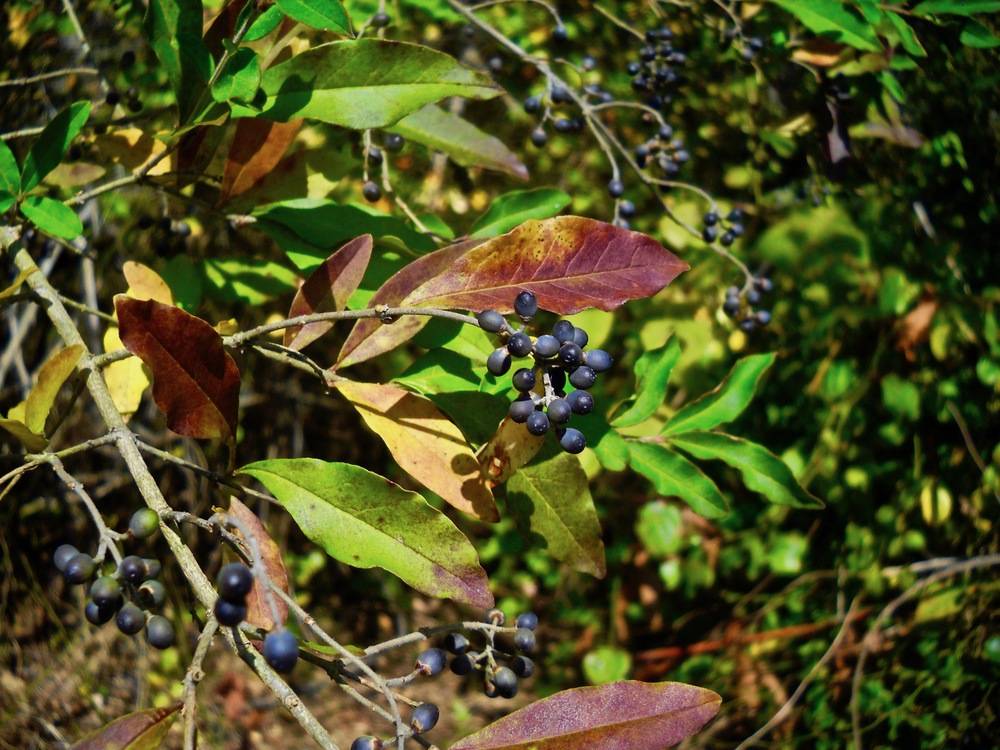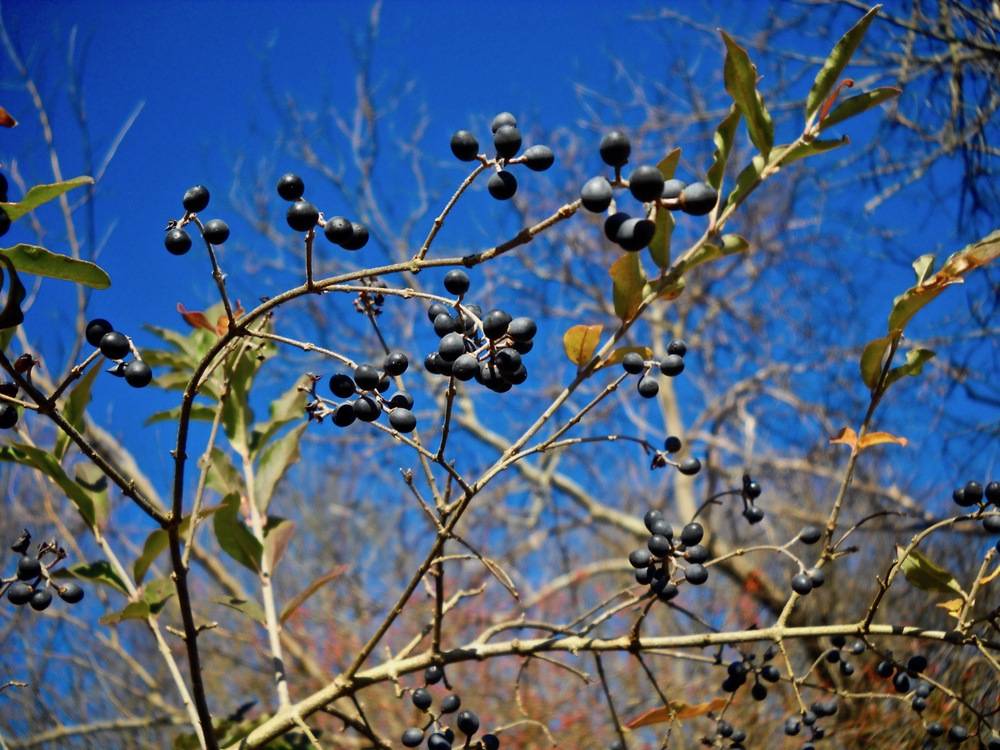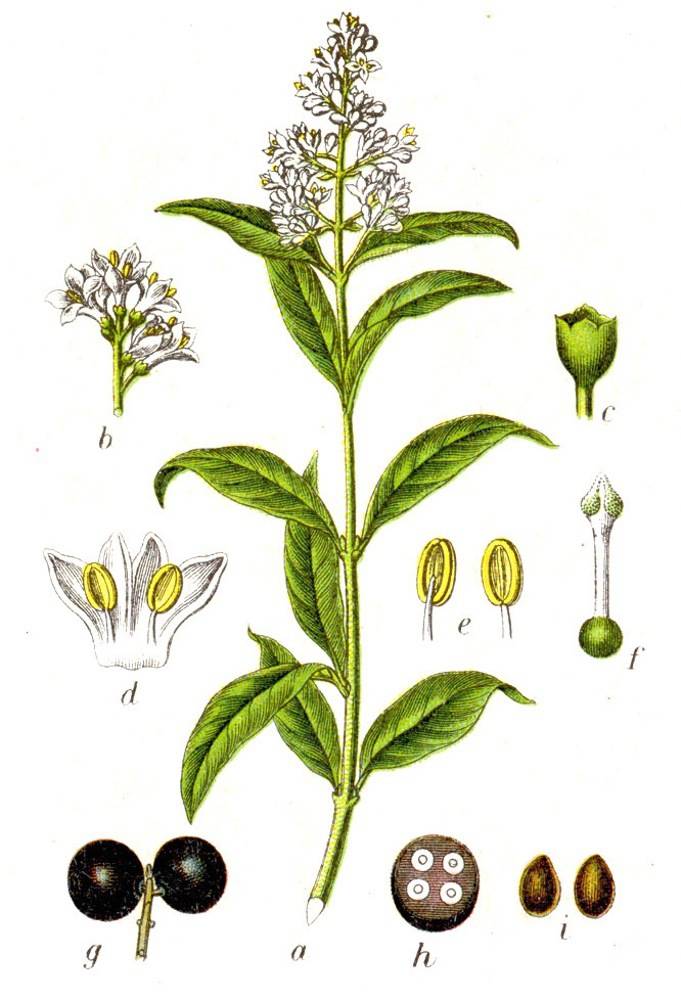European privet
The European privet belongs to the olive family and is a shrub that is indigenous to Europe, southwestern Asia, and northern Africa. It can grow in a variety of habitats, and can be either evergreen or deciduous depending on local growing conditions. Its glossy foliage and bushy growth form led to its popularity as a hedge-forming plant within its native range. No doubt, it was introduced to North America to serve the same purpose. However, it is considered an invasive species in areas of New England where favorable gorwing conditions and its suckering habit have resulted in dense thickets that shade out native plants.
At Salter Grove, it occurs as solitary and relatively small individuals in different habitats along all the mainland trails. Plants growing in sunny areas tend to have thicker foliage and produce more flowers and fruits than those in the shade, but none achieve the density of stems and leaves that would lead to hedge formation.
The white tubular flowers dangle in attractive clusters and release an odor considered fragrant by some but unpleasant by others. The fruits are toxic to humans but are sought after by birds. The widely and randomly spaced plants in the park suggest that they germinated from seeds defecated by birds passing through the park.
Apart from its use in landscaping, different parts of the European privet were traditionally used for other purposes in Europe. The astringent leaves were soaked in vinegar and then applied with a compress to relieve headaches. Along with the bark, they were also used to prepare a yellow dye. The unripe fruits yielded a bluish-green dye, whereas ripe fruits were made into a black dye or ink. Although the woody stem is hard and close-grained, its usually diminutive diameter restricted its use to making small tools. The long and pliable young twigs were used to weave baskets and temporary fencing.
For more information:
https://gobotany.nativeplanttrust.org/species/ligustrum/vulgare/
http://dendro.cnre.vt.edu/dendrology/syllabus/factsheet.cfm?ID=1053
https://www.invasiveplantatlas.org/subject.html?sub=3036
https://pfaf.org/user/plant.aspx?latinname=Ligustrum+vulgare
https://en.wikipedia.org/wiki/Ligustrum_vulgare
Millspaugh, C.F. (1974). American Medicinal Plants. Dover Publications, Inc. pp. 545. (Original work published in 1892)

